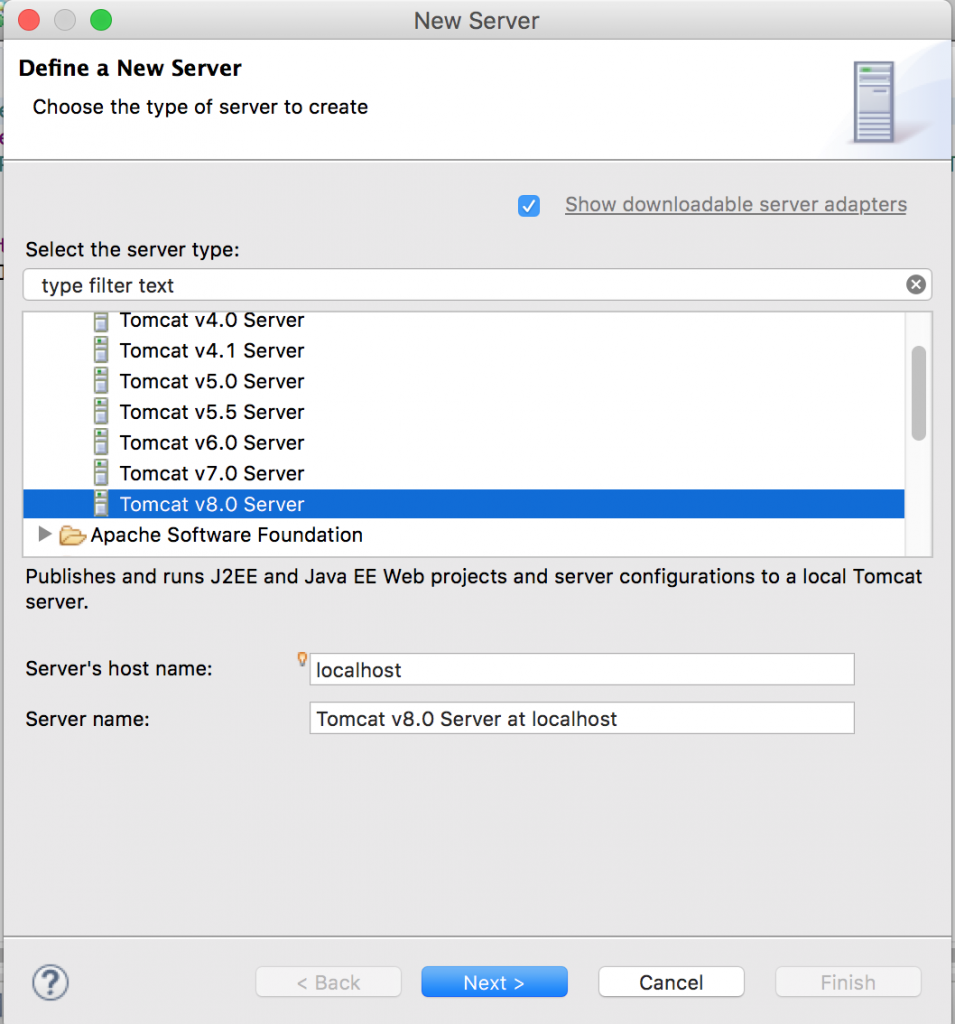
For the Tomcat installation directory:, click BrowseĪnd go find the server you downloaded earlier.Server in your Project Explorer view that you will be using to Click Create a new local server to check.Click Add, then select the name that most closely corresponds to.Go to Window -> Preferences -> Server > Runtime.Version (although Tomcat 6 works very well too) seeĪssuming you have this downloaded, unzippped and available, do this: Lot more "JEE" cooperation, specifically for JavaServer Faces work, out of that Now establish your server container environment.The name can beĪnything you choose I chose jdk1.6.0_20. Name: so it's obvious that you're using your special one.
#Setting up apache tomcat in eclipse on mac update
You're in the JRE Definition dialog, be sure to update the JRE Navigate to where you've created a copy of Sun's Java Development Kit.įor example, mine is at C:\Users\russ\dev\downloads\jdk1.6.0_20. To change it, click on the Location path, then click the Editīutton. Installed on your computer host for executing Java programs. Establish the workspace JDK by choosing Window -> Preferences.
#Setting up apache tomcat in eclipse on mac code
I obsess over my code format and save my settings to Then navigate to find the template you saved away after modifying the format. > Java -> Code Style -> Formatter, click Import and Is automatically formatted by Eclipse, go to Window -> Preferences

This short tutorial should help you set up a new Eclipse workspace for webĪpplication development including a Tomcat 7 server and the Apach MyFaces Table of Contents Introduction Step by step Eclipse preferences Code format settings Set up the JDK Set up the server container Set up JSF and JSTL libraries Appendix A: web.xml Appendix B: faces-config.xml


 0 kommentar(er)
0 kommentar(er)
